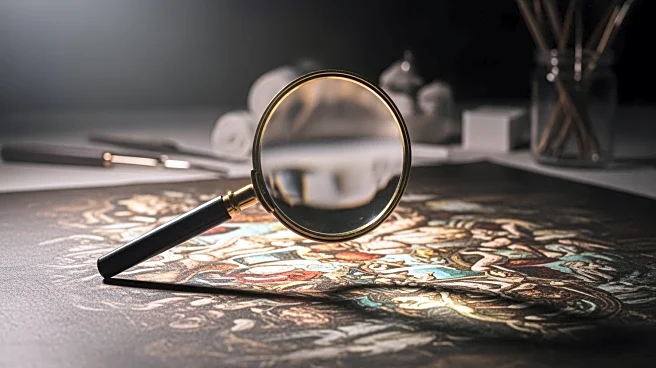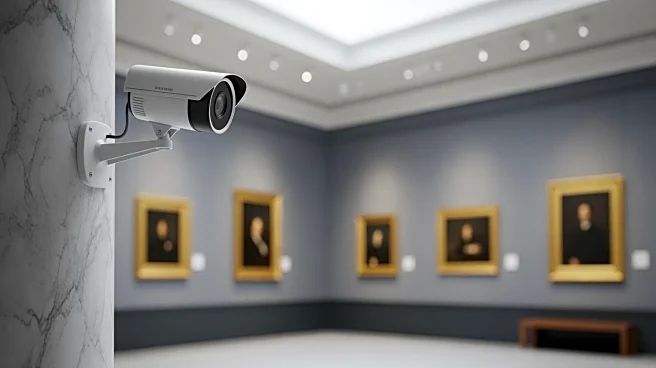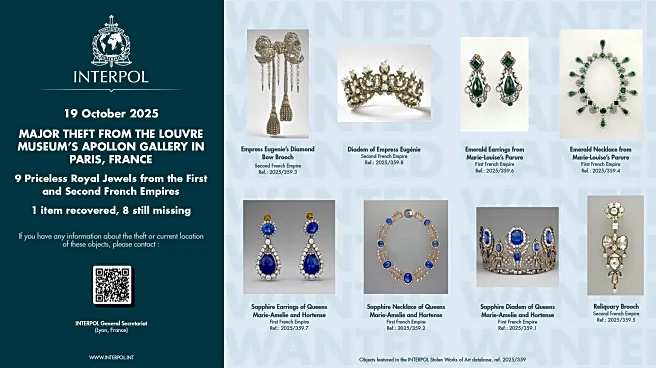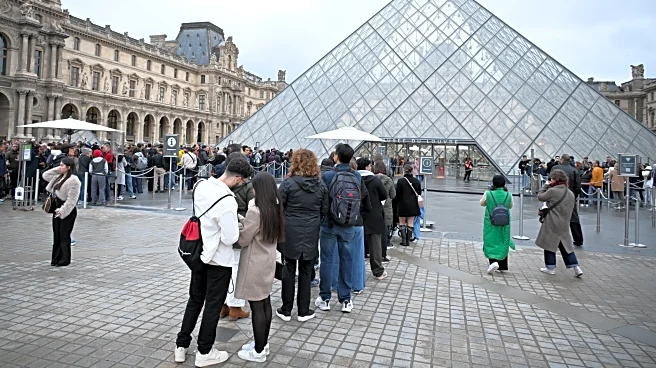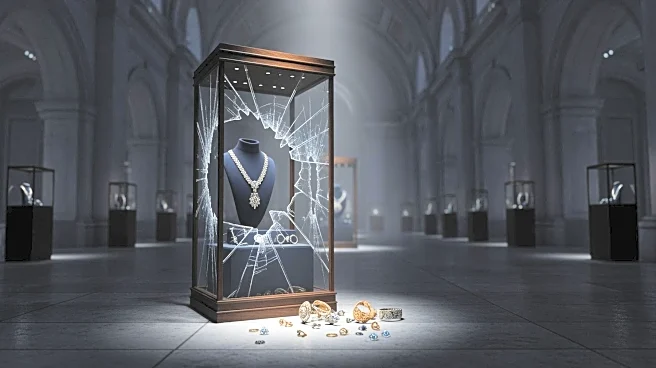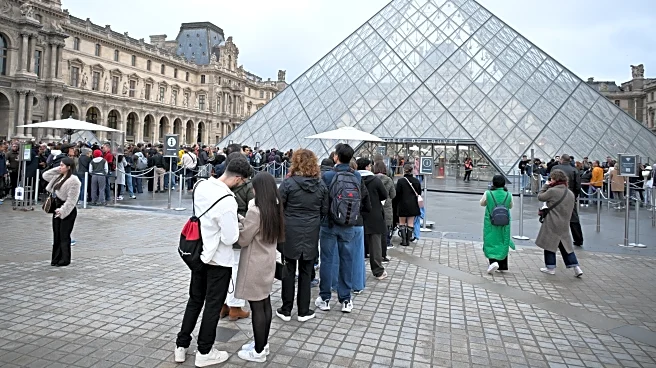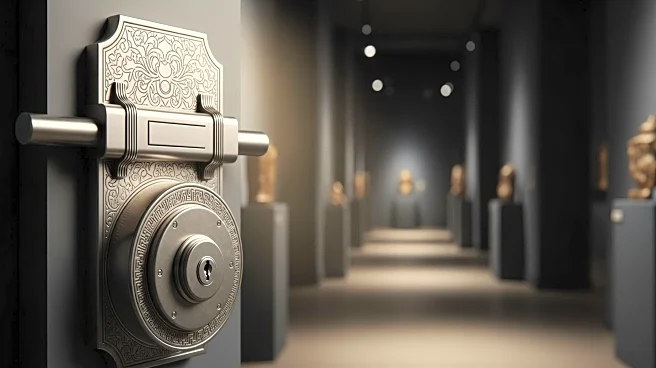What's Happening?
The recent theft of over $100 million worth of historic jewelry from the Louvre has sparked discussions about the nature of art heists. Laure Beccuau, the lead prosecutor in the case, suggested that organized
crime or a major sponsor might be behind the theft. However, Christopher Marinello, CEO of Art Recovery International, refutes the idea of theft-to-order scenarios, stating that in his 39 years of experience, he has never encountered such cases. Marinello explains that stolen art pieces are difficult to sell due to their recognizability, whereas jewelry can be broken down and sold as individual gems, making it a more lucrative target. Frederick Chen, an economics professor, notes that museums often have less security for artifacts that don't drive ticket sales, making them vulnerable targets.
Why It's Important?
The insights provided by experts like Marinello and Chen highlight the challenges museums face in protecting valuable artifacts. The low black market value of stolen art reduces the incentive for criminals to target these pieces, and consequently, museums may invest less in security. This vulnerability can lead to significant cultural and financial losses, impacting the preservation of historical artifacts. The discussion also underscores the need for improved security measures and potential policy changes to deter such crimes. The broader implications affect not only museums but also the art market and cultural heritage preservation.
What's Next?
The French government has yet to announce a reward for the return of the stolen jewelry, although experts like Anthony Amore have advocated for it. The case may prompt museums to reassess their security protocols, especially for less prominent artifacts. Additionally, the ongoing investigation could lead to new insights into the methods and motivations behind art thefts, potentially influencing future preventive measures.
Beyond the Headlines
The ethical considerations of art theft, such as the destruction of cultural heritage and the impact on public access to art, are significant. The case also raises questions about the role of rewards in recovering stolen art and the balance between incentivizing returns and encouraging theft. Long-term, the incident may influence how museums prioritize security investments and engage with law enforcement to protect their collections.
